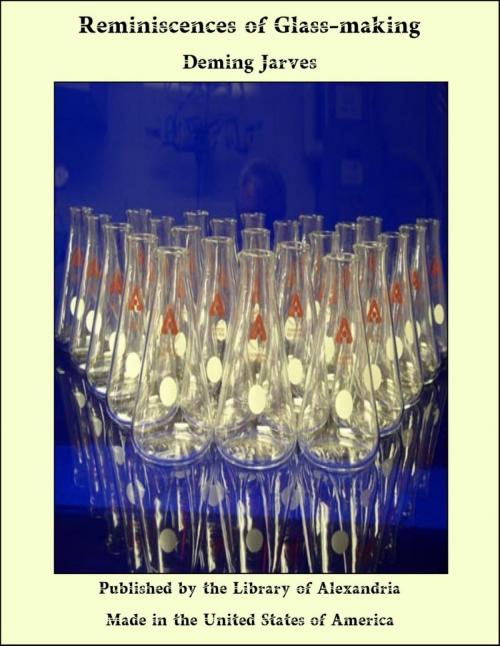Reminiscences of Glass-making
Nonfiction, Religion & Spirituality, New Age, History, Fiction & Literature| Author: | Deming Jarves | ISBN: | 9781465597809 |
| Publisher: | Library of Alexandria | Publication: | March 8, 2015 |
| Imprint: | Language: | English |
| Author: | Deming Jarves |
| ISBN: | 9781465597809 |
| Publisher: | Library of Alexandria |
| Publication: | March 8, 2015 |
| Imprint: | |
| Language: | English |
It may be safely asserted that no department of art has, from its earliest period, attracted so much attention and investigation, none involved so extensive a range of inquiry, or been productive of more ingenious, interesting, and beautiful results, than the manufacture of glass. The question of the origin of glass goes back to the remotest antiquity, and is involved in almost entire obscurity. All that modern writers on the subject are enabled to do, is to glean hints and indistinct statements in reference to the subject, from the very brief and unsatisfactory accounts of the ancients. These, however, throw but a feeble light upon the precise point of the origin of the manufacture; and little is proved beyond the fact of its great antiquity. That the subject held a very prominent place in the technological literature of the ancients is clearly proved; Pliny, Theophrastus, Strabo, Petronius Arbiter, Berzelias, Neri, Merrit, Runket, and others, referring constantly to it. The writings of all these demonstrate the deep interest existing upon the subject at their various times, but still fail to present us with any connected or detailed account of the rise and progress of the art. When it is considered that the elements involved in the manufacture of glass are derived from the earth,—not one of its components being in itself transparent, but earthy, opaque, and apparently incapable of being transmuted into a transparent and brilliant substance,—when it is considered that from these a material is produced almost rivalling the diamond in lustre and refractive power, and sometimes so closely resembling the richest gems as to detract from the value of the costliest; can it be wonderful that in the earliest ages the art was invested with a mysterious interest attaching to no other mechanical department?
It may be safely asserted that no department of art has, from its earliest period, attracted so much attention and investigation, none involved so extensive a range of inquiry, or been productive of more ingenious, interesting, and beautiful results, than the manufacture of glass. The question of the origin of glass goes back to the remotest antiquity, and is involved in almost entire obscurity. All that modern writers on the subject are enabled to do, is to glean hints and indistinct statements in reference to the subject, from the very brief and unsatisfactory accounts of the ancients. These, however, throw but a feeble light upon the precise point of the origin of the manufacture; and little is proved beyond the fact of its great antiquity. That the subject held a very prominent place in the technological literature of the ancients is clearly proved; Pliny, Theophrastus, Strabo, Petronius Arbiter, Berzelias, Neri, Merrit, Runket, and others, referring constantly to it. The writings of all these demonstrate the deep interest existing upon the subject at their various times, but still fail to present us with any connected or detailed account of the rise and progress of the art. When it is considered that the elements involved in the manufacture of glass are derived from the earth,—not one of its components being in itself transparent, but earthy, opaque, and apparently incapable of being transmuted into a transparent and brilliant substance,—when it is considered that from these a material is produced almost rivalling the diamond in lustre and refractive power, and sometimes so closely resembling the richest gems as to detract from the value of the costliest; can it be wonderful that in the earliest ages the art was invested with a mysterious interest attaching to no other mechanical department?















